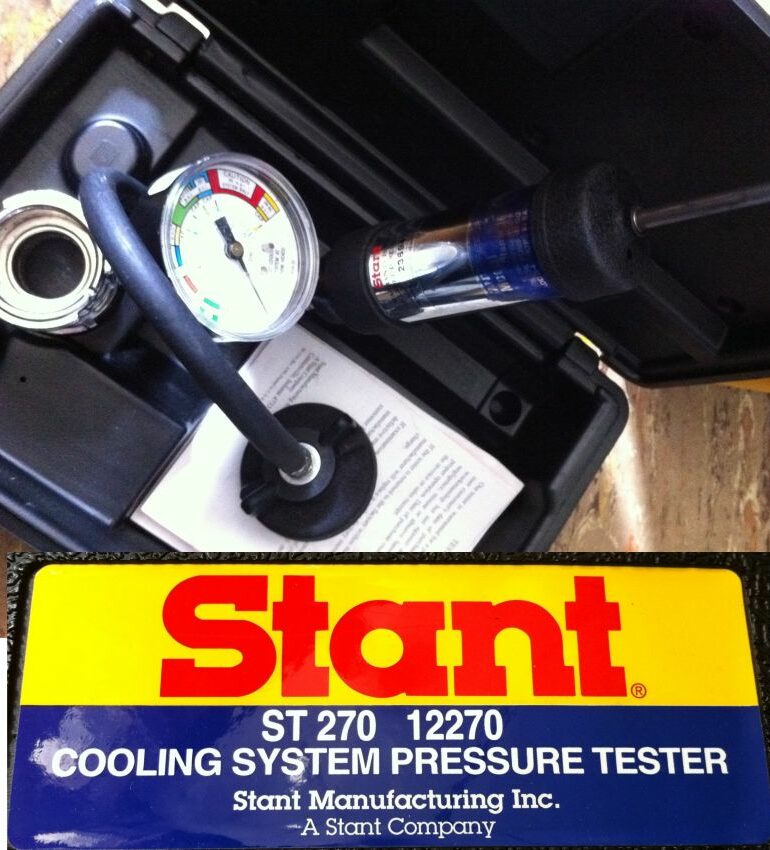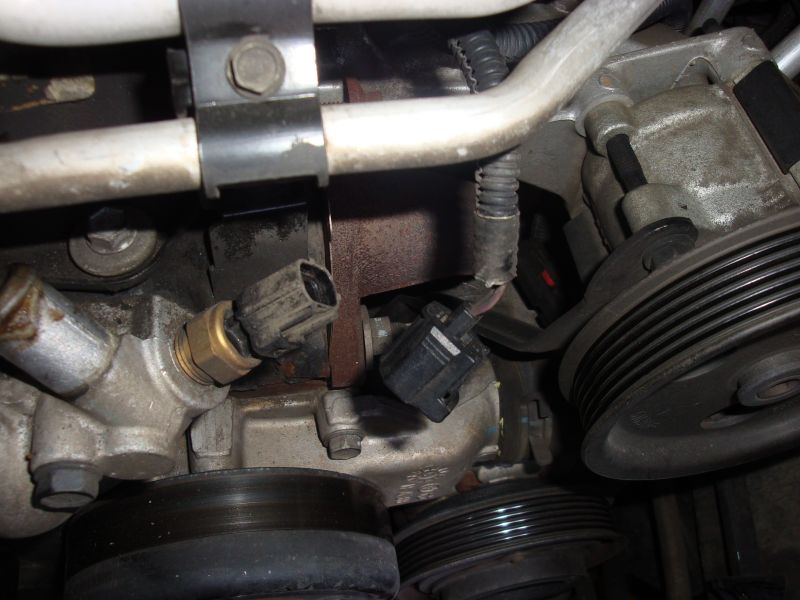Note: This maintenance write-up for an ’05 LJ water pump swap is provided courtesy of Mike Forbes. Mike was doing some work on his 2005 TJ and asked if I wanted to put the info on the site. Since I had a water pump write-up for the early TJ 4.0L engines but not for the later years, I was happy to accept his offer. So here it is, direct from Mike. And Mike….thanks again for providing this info for everyone else to use.
This is a water pump and high flow thermostat housing install on 2005 LJ. Procedure is the same for a 4.0 L TJ. Note this was done along with the timing chain so some of the pictures may show the alternator off its bracket and the radiator missing, this is covered in the timing chain write-up so don’t let that throw you.
I purchased the Mopar parts from moparonlineparts.com at the time 31% off list.
Hardware Needed:
Mopar Water Pump and gasket (this is a high flow stock for 2005)
Hesco High Flow Thermostat housing and gasket (High Flow Thermostat Housing #HFTH from http://www.hesco.us/)
Hesco High Flow Thermostat (HP GM/FORD/AMC/JEEP Thermostat 195 degree #4365 from http://www.hesco.us/ )
Mopar Upper Radiator Hose
Mopar Lower Radiator Hose
Thread Sealant with Teflon
NO RTV Required
Optional:
Serpentine Belt
Heater Hoses
Tools Needed: (I used all metric here, no guarantee some of these aren’t standard)
Factory Service Manual (FSM) used for torque settings, below are from an ’05, your mileage may vary, verify with a FSM.
1/2″ Breaker Bar
Inch lbs Torque Wrench
Middle Range Torque Wrench
11mm socket
13mm socket
14mm socket
Gasket Scraper
Wire Brush
Channel Locks
Large Crescent
Optional:
Stant Pressure Tester
Since I was changing the timing chain it made sense to replace the water pump and thermostat. The vehicle is at 97,000 miles and we only got it at 91,000 so I did not know about previous maintenance. At this time I am also replacing the radiator hoses and thermostat. Heater hoses are going to happen later and they looked ok. Make sure you check where they run along the engine block to make sure they are not worn.
The FSM states you need to move the power steering pump, it was not in the way. I left it alone.
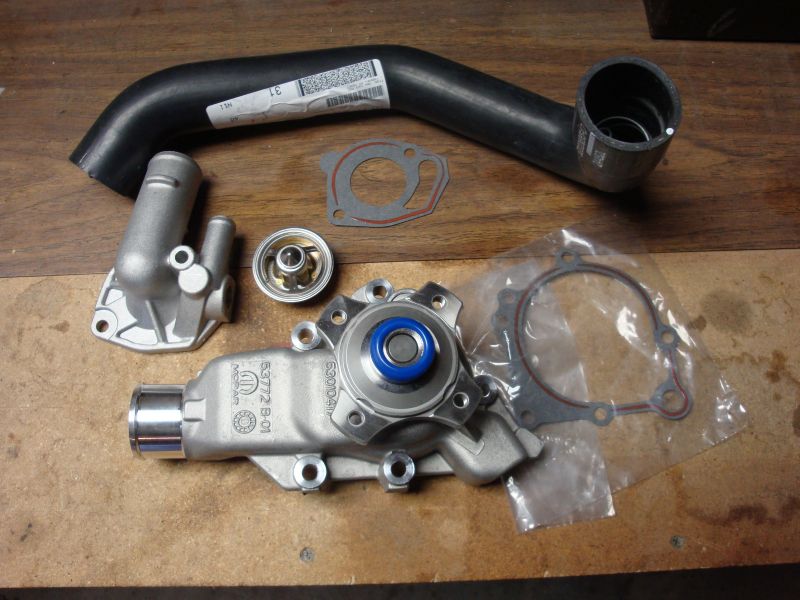
I chose to go with a Hesco High Flow thermostat and Housing. Now I am an upper radiator hose short, Chrysler is apparently back ordered on the upper hose and no ETA. (I will change it when it becomes available.)
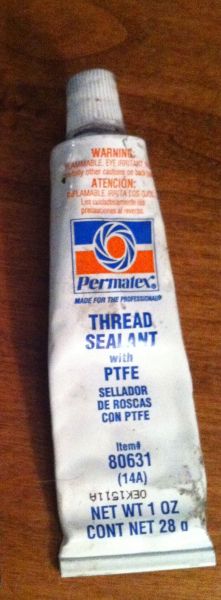
Only sealant needed is for the the temp sensor on the thermostat and the pipe on the water pump. Picked this up at NAPA.
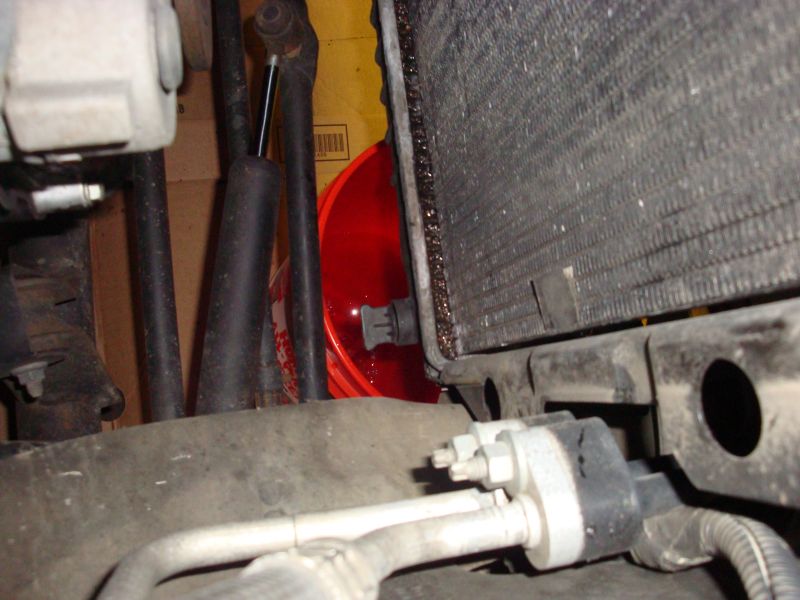
Step 1: Drain the cooling system. Using a bucket under the radiator and open the drain valve.
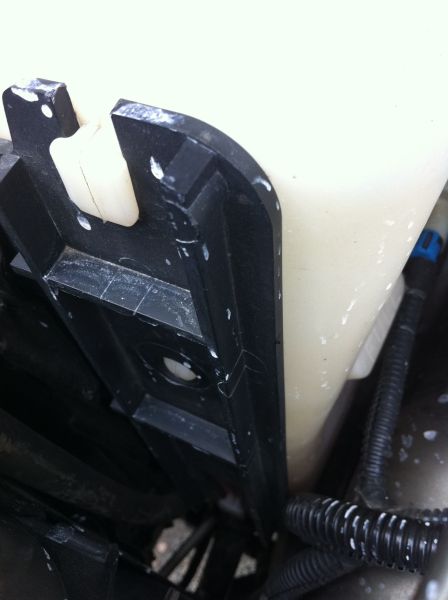
Step 2: Remove the radiator overflow tank by pressing in on the nub inside the shroud and lift up. Remove the hose from the radiator neck.
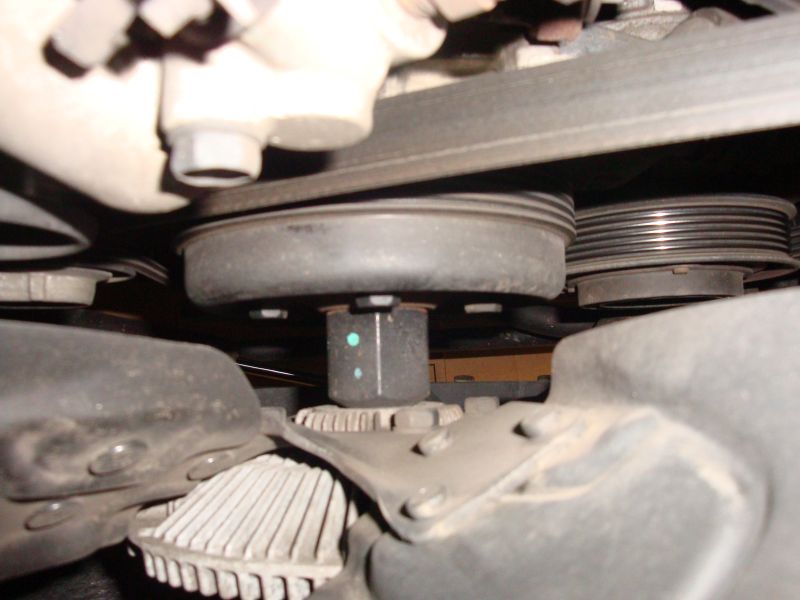
Step 3: Once drained, break the fan free with a large crescent wrench. A big one is needed here as the fan nut is 36mm.
’05 Water Pump Replacement

Step 4: Once the fan is loose, remove the 4 bolts holding the shroud to the radiator with a a 11 mm socket. There are 2 on each side, the lower ones are a pain but they can be reached from the top, I used a 1/4 inch socket drive to get to these.
Finish removing the fan and remove the fan and shroud and set aside.
NOTE: DO NOT STORE THE FAN FLAT. The fan MUST be stored VERTICAL. It has to do with the thermal viscous fan drive so be careful and don’t lay it on it side.
Step 5: Loosen the 4 13mm bolts holding the fan pulley to the water pump. You are just breaking them free while there is belt tension.
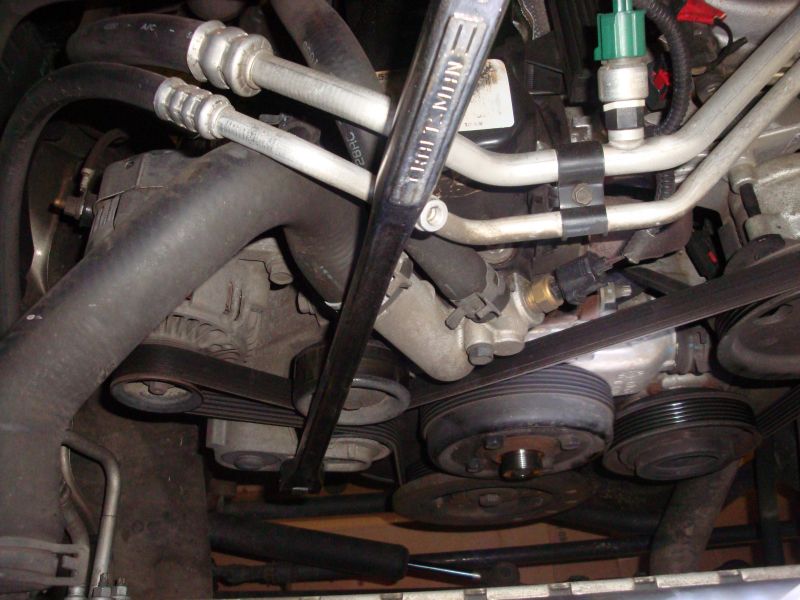
If you do not have a diagram of the belt routing on your radiator, I would recommend now taking the time to take a picture, sketch it out or find it in your factory service manual.
Step 6: Using a 1/2 inch breaker bar, move the belt tensioner and remove the serpentine belt.
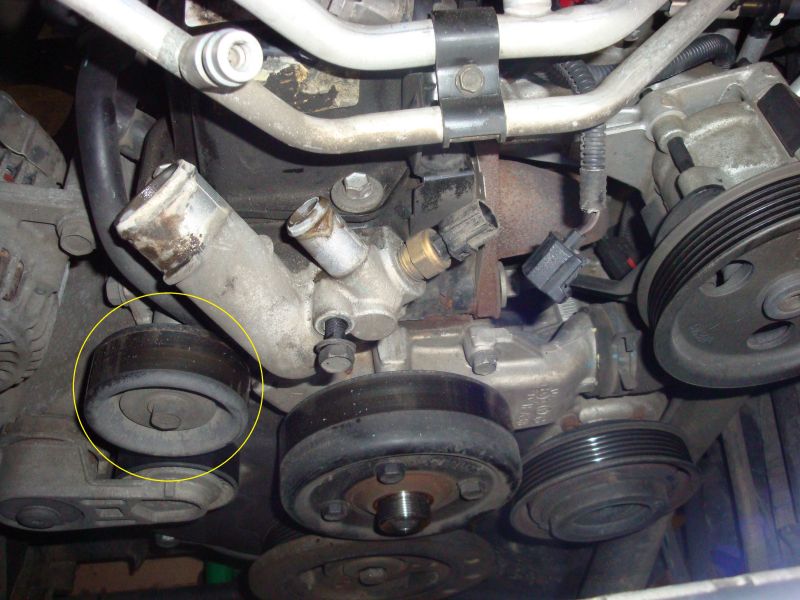
Step 7: Remove the idle pulley on the left side of the water pump.
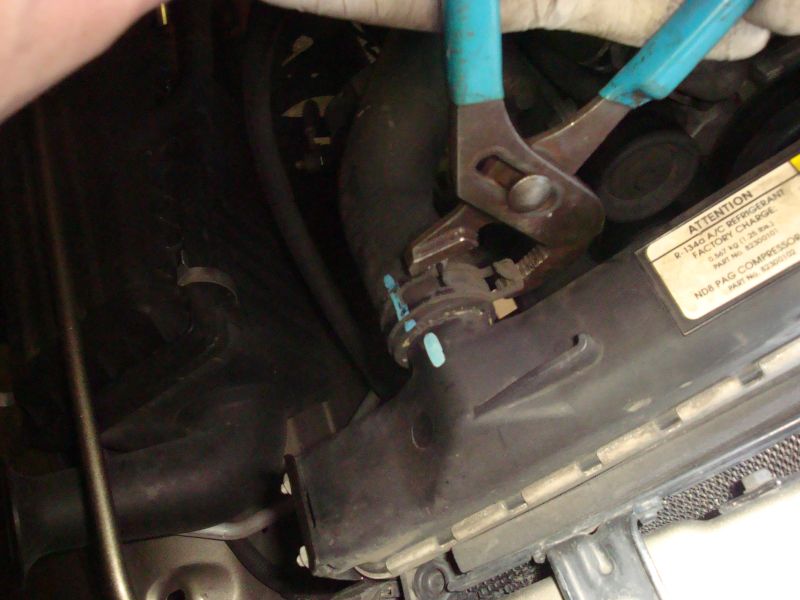
Step 8: Place a drip pan under the engine by the water pump to catch any fluid coming out.
Remove the Top radiator hose from the thermostat by squeezing the clamp with a pair of channel locks. Sears carries a 9 dollar tool for these which I have to say would have made things easier. But a pair of channel locks will suffice.
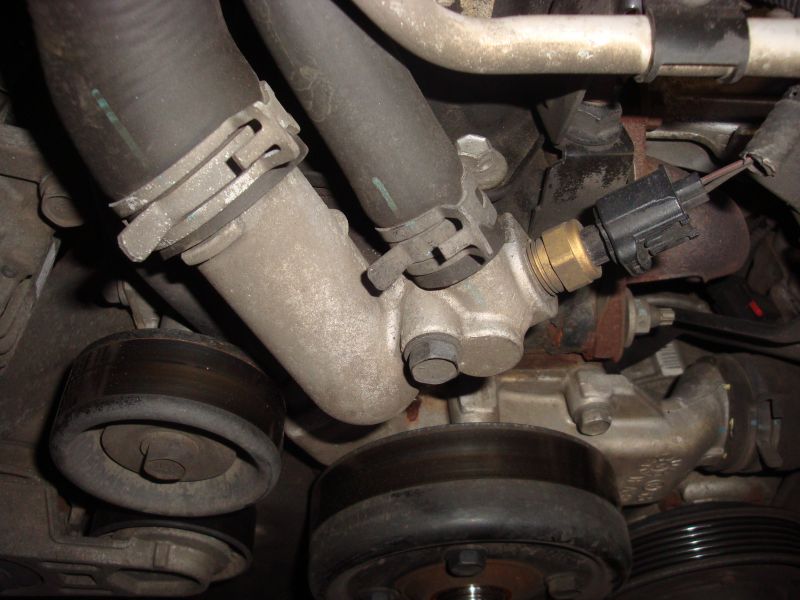
Step 9: Remove the heater hose from the thermostat by the same method.
’05 Water Pump Replacement
Step 10: Remove the temperature sensor wiring from the thermostat by squeezing the connector and pulling it.
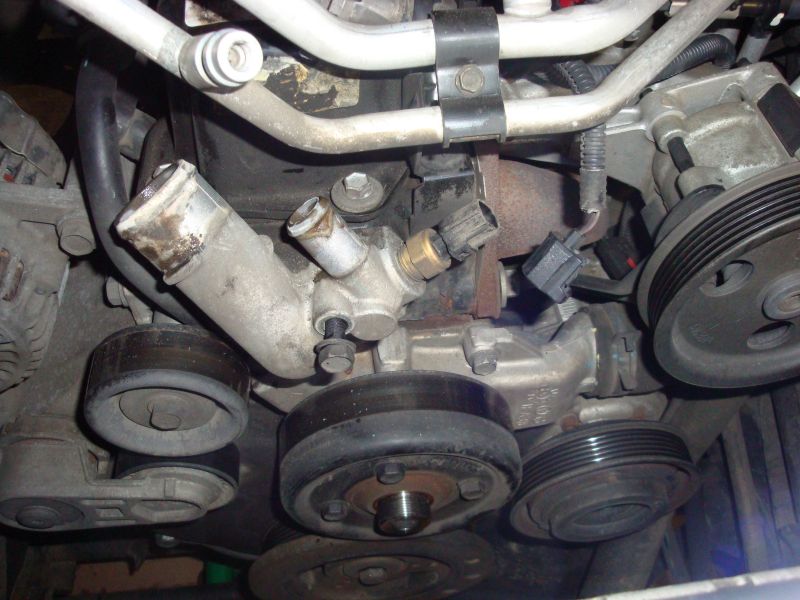
Step 11: Remove the two thermostat housing bolts. Note, one is longer than the other. Use a 13mm socket.
Remove the housing and set aside.
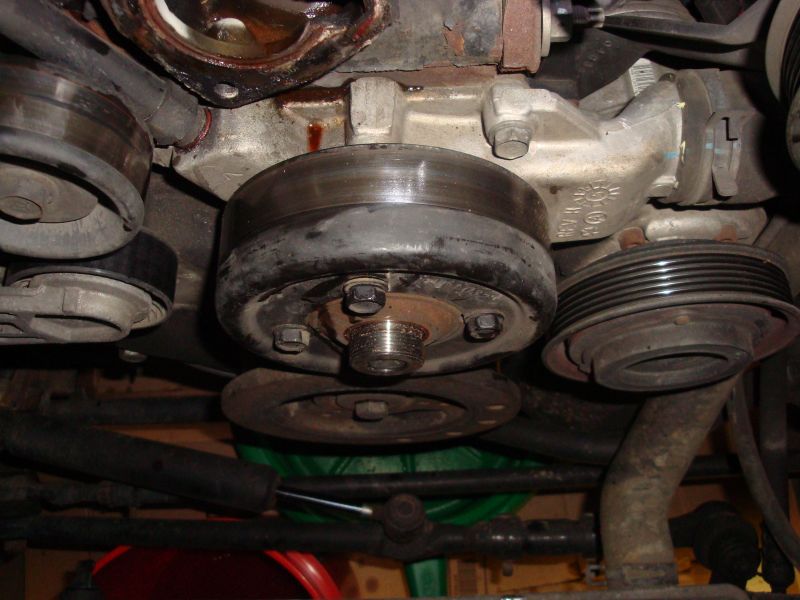
Step 12: Remove the water pump pulley by removing the previously loosened 4 bolts. Set aside.
Step 13: Remove the heater hose from the water pump as was done previously on the thermostat.
Step 14: Remove the lower radiator hose from the water pump the same way.
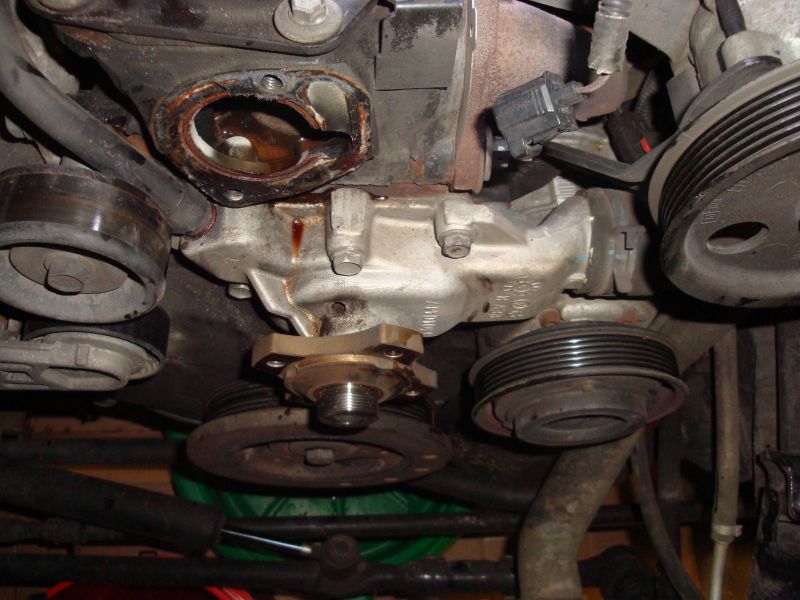
Step 15: Remove the water pump 13mm bolts. There is one that is a longer bolt. As I removed the bolts I placed them in a piece of cardboard in the same location as they were on the water pump. This makes bolt placement on install easy.

Step 16: Remove the pump from the engine.
’05 Water Pump Replacement
Step 17: Remove the heater pipe from the water pump with a wrench, remember the orientation.
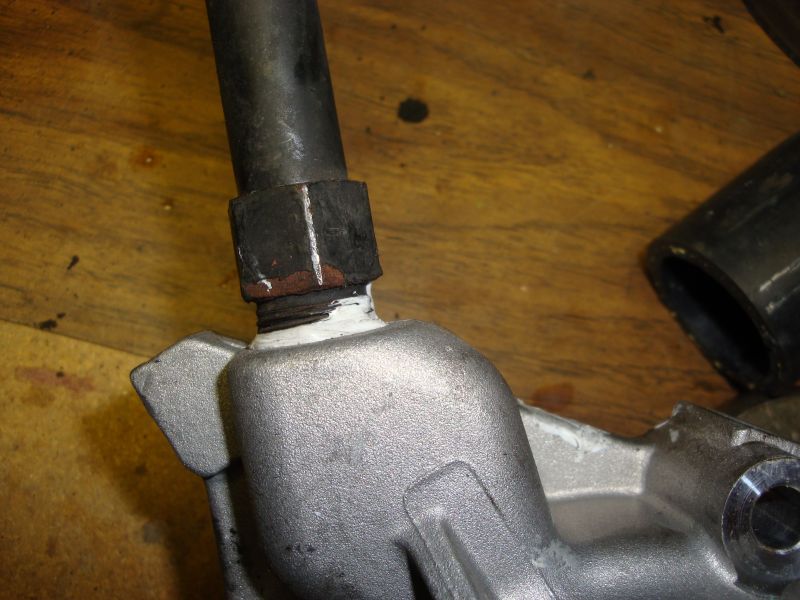
Step 18: Install the heater pipe on the new water pump with some thread sealant with Teflon with the same orientation it had on the old pump. This will be pretty self explanatory when you do this. You can always place the pump in front of its location and check the pipe with the heater hose location.
Step 19: Remove the temperature sensor from the old thermostat housing.

Step 20: Install the temperature sensor in the new thermostat housing with some thread sealant with Teflon.
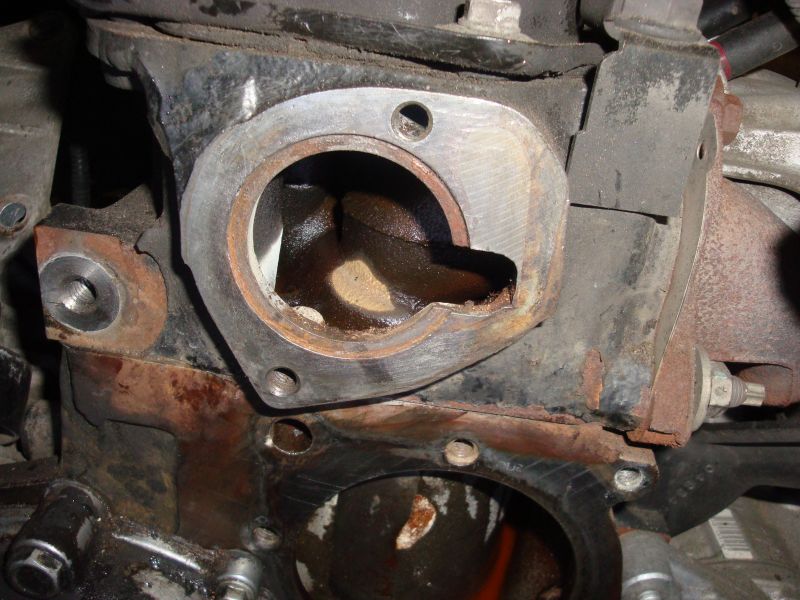
Step 21: Clean the engine gasket surfaces well with a gasket scraper and a wire brush. I made sure the surfaces were free of any RTV or previous gasket material. I cannot stress this enough, take your time on this. You have already taken the time to take everything off, you really don’t want to do this twice do you? Make sure it is gasket free, failure to do so can result in a leaky installation.
Note: Jeep Forum, Wrangler Forum, etc, there are many conversations on how to gasket prep for the thermostat and water pump. Most people say RTV and you are free to use that. I follow the factory service manual and have not had an issues yet. If you lack an inch-lbs torque wrench RTV might be a good option.

Step 22: The FSM says to install the water pump gasket dry and with the silicone bead facing the water pump. Install the pump and hand tighten the bolts evenly. Then torque them in a criss-cross fashion to 23 N•m (200 in. lbs.).
Step 23: Install the thermostat into the engine block with the bleeder hole at the top. Make sure the thermostat is properly seated in the block as it can cause the housing to crack when tightening if it is not. The FSM had two thermostat installation sections I picket the lower torque of the two. I think one covered the 4 cylinder but it was not clear. So this is what I did. I wet the paper gasket with water and had the silicone bead facing the thermostat housing and then installed it. Hand tighten evenly then torque to 20 N•m (15 ft. lbs.). I have done two of these now and having the small torque wrench has been indispensable. No cracked housing, no leaks! Skip using a torque wrench at your own risk.
Step 24: Reconnect the hoses.
Step 25: Reinstall the fan pulley.
Step 26: Reinstall the idle pulley near the alternator and the left of the water pump.
Step 27: Reinstall the serpentine belt. If you have not changed it in a while (ie 2 years or so) or it has cracks and is glazed, this is a good time to replace it and keep your old one as a trail spare.
Step 28: Reinstall the fan and shroud.
Step 29: Reinstall the overflow bottle and hose.
Step 30: Refill the radiator with new fluid. and start the engine with the cap off. Keep filling the radiator until its full as air will continue to burp out making room for more fluid. At this point I shut off the engine and loosened the heater hose at the thermostat to let the air out. Note: The engine was not hot at this point. Once fluid came out I reset the clamp.
Note: The factory clamps are finicky on used hoses, so you may have to shift them around if there are leaks. I did not replace the heater hoses, I need to look into this.

You can test your new install with a Stant Pressure Tester, I got mine of Ebay for 60 bucks. I needed to find a pesky slow leak on our TJ and this tool was indispensable. Pumping the radiator up to about 15 lbs, it held the pressure fine. The cap is rated to 18 lbs and has a spring. If your cap is 5 years old or so, it will lose some strength and most likely release before 18lbs. Caps are under 5 bucks, since mine tested out at 14 lbs, I swapped it with a new one before this build.

